General info
Singapore is one of best places to live, it is known worldwide as the best planned city of the world, with the most successful public housing of the world, one of the highest standards of living, but also most expensive places to live!
Singapore area was 581.5 sq km in 1960, but due to land reclamation it grew to about 710 sq km. The high immigration rate made population to rise from 3 millions in 1990 to 5 millions as 2010 (of which 3.73 millions are Citizens or Permanent Residents). Population density: 7000 people per sq km.
Singapore is one of the wealthiest counties in the world, being ranked #3 to #5 as GDP per capita (according Wikipedia) have the largest share of millionaires in the world (source: Telegraph).
The greatest thing of Singapore is the public housing, built by Housing and Development Board, it is the home for 80% of Singaporeans, from low to middle class (the peak was 87% in 1988-1990). Unlike other countries where public housing is mostly rental, HDB public housing is mostly “sold”, helping Singapore to have the highest home ownership ratio in the world: 91%, but the home ownership is actually a 99 years lease to “owners”.
There are about 10,000 HDB blocks in Singapore, most of them ranging from 10 to 40 storeys, plus a small number of walk-up (2-4-storey) blocks, plus a special project Pinnacle@Duxton built in 2009, having 50 floors it is the tallest public housing in the world and having longest sky gardens in the world.
Typical, 100 sq m HDB apartments, are sold on resale market at prices from 400,000 SGD (320,000 USD) at island outskirts to 700,000 SGD (560,000 USD) in Queenstown, as 2013 bubble peak, doubled since 2007 due to undersupply (source: HDB InfoWEB – Median Resale Prices). New HDB apartments are subsided at 20-30% less than market prices, with additional grants for first timers and low-income people.
HDB built about 20 “New Towns” and few dozens “estates”, since Annual Report 1990 being organized under 26 “Towns” which approximately match URA planning areas.
The public housing estates built after 1990 feature vibrant and distinctive designs (unlike Hong Kong or Korea monotony). The residential blocks, multi storey car parks, bus stations, and other facilities are linked by covered walkways, so no problems if the sun is too hot or is raining. Many older estates were improved through various upgrading programmes, to have same facilities like newer ones: multi storey car parks, lifts that stops on every floor, former ground parking spaces between blocks transformed in parks.
Despite high density, is one of the most green cities in Asia, most spaces between blocks being full with grass and trees. But I have a bad feeling when I see deforestation and building low-rise things in forest. The city should develop more vertically, in my opinion many cheap landed housing areas should be demolished and replaced by high-rise things, otherwise all forest will be gone in the next decades.
Singapore do not have supertall skyscrapers due to the height limit of 280 meters imposed by airports. There are 3 buildings at identical height of 280 meters, creating a beautiful uniform skyline.
Public transport is so efficient, that owning a car is a luxury rather than necessity. Mass Rapid Transit opened in 1987. The initial phase of construction 67 km of lines with 42 stations, was completed in 1990. With a third line and several extensions of the existing lines, MRT reached 113 km in 2007 and links all existing HDB towns. The network is completed by 29 km of intra-town Light Rapid Transit lines, having stations at max 400 meters from each HDB block. 3 more lines are under construction or planned for next decade, they will bring the MRT Network to 278 km by 2020. If there is no MRT station near you, at max 400 meters away you can find a bus station.
Cars are very expensive in Singapore, 2x-4x times higher than factory price (read more). For most people, situations in which a car is necessary are rare, so is cheaper to hire taxi rather than owning a car. A lot of measures for reducing vehicle usage were taken along history, the ratio is one car per 8 people (perhaps in slightly decline from 1998? the year in which Electronic Road Pricing was implemented), this reflects in smooth traffic and reduced pollution.
Singapore Changi is the airport who won most best airport awards by year.
Singapore is also one of the most visited cities of the world by international tourists, ranking in 3rd place after Paris and London, according Wikipedia. Conservation programmes protects architectural heritage, unlike Hong Kong where lot of historical buildings were demolished. Singapore is also one of the safest countries of the world, thanks to very (too) strict laws.
The bad side of Singapore may be exactly the government with its harsh laws. People’s Action Party (PAP) rule the country since 1959 and is criticized for limited democracy. The single TV channels are the ones operated by government (reminding me of communist countries). Until 2008, were no casinos. National Service is mandatory for all men, adult magazines and chewing gum are banned.
Another thing that I love at Singapore is that the government websites shows a lot of information about the country and housing. The city-state system, and the big percentage of population living in public housing help me to make great studies and detailed statistics.
Public housing
Dedicated article: HDB history, photos and floor plans 1930s – 2010s and HDB Database
Singapore Improvement Trust was formed in 1927 and started building public housing in 1932. The SIT estates were very similar with UK council housing, walk-up apartment blocks and terraced housing, high-rise blocks were introduced in 1952. In the same year SIT started building Queenstown, first satellite town built away from the city.
In 1960 Housing and Development Board took over SIT, and switched to high-rise blocks, most of them being 10-12 storeys. Since 1970s, HDB built a series of New Towns across island, massive blocks with large spaces between them, min 30 meters in 1970s and min 24 meters in 1980s.
In the first decade of HDB, flat types were 1-Room (25-33 sqm), 2-Room (35-45 sqm), 3-Room (50-65 sqm), and 4-Room (70-90 sqm). From 1970s to 1990s common flat types were 3-Room (65-75 sqm), 4-Room (85-105 sqm), 5-Room (120-135 sqm), Executive Apartment / Maisonette (140-155 sqm).
Since 1980s the 4-Room flats became dominant and no more 1- and 2-Room ones were built. From 1989 no more 3-Room were built too. HDB flats reached an average size of 120 sqm for newly-built units in middle 1990s, a world record for public housing.
1980s estates (point mouse on photos to see place name)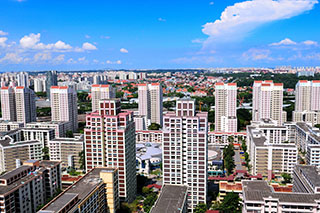
HDB estates built since 1990s offer highest standards of living for public housing. All estates have multi storey car parks, so no more cars are parked on the street. This allowed higher density, taller blocks, and a lot of green space between blocks. Blocks height varies between 9 and 18 storeys, most are with 15 storeys, lifts stops on every floor, minimal distance between blocks was reduced to 18.3 metres (60 feet). All blocks are linked with car parks, bus stations and other facilities, with covered walkways, so no more problems if the sun is too hot or is raining.
Also from 1991, various upgrading programmes were launched for older estates, that are improved with multi storey car parks, lifts that stops on every floor, former ground parking spaces between blocks transformed in parks. Most of 1- and 2-room rental blocks were demolished during 1980s and 1990s, the cleared land was redeveloped with new 5-room and Executive units. SERS programme, which demolish and rebuild owner-occupied blocks, was launched in 1995.
In 1994 the government said that all HDB and private housing should include a household shelter, another thing unique in the world. But useless idea in my opinion, household shelter sometimes placed in middle of flat, reducing the layout versatility. HDB flat size was standardized: 4-Room (100 sqm), 5-Room (120 sqm), Executive (140 sqm).
Taller blocks appeared since late 1990s (where the height restrictions allows). 30-storey blocks appeared since 1990s, first 40-storey HDB were completed in 2004 and first 50-storey HDB, the Pinnacle@Duxton was completed in 2009, being the tallest public housing in the world and having longest sky gardens in the world.
Since 2000 the standard HDB flat sizes were reduced: 4-Room (90 sqm), 5-Room (110 sqm), Executive (130 sqm), Maisonettes being dropped. But because of building more and more 5-Room (which in fact have only 4 rooms), the average flat area remained higher, around 105-110 sqm. Due to rising prices and economy, they reintroduced 3-Room (65 sqm) in 2004 and 2-Room (45 sqm) in 2006. Studio apartments (35-45 sqm) were introduced in 2001 for elderly. No more Executives are built since 2004. The average size of new flats dropped to about 80-90 sqm.
1997 Asian financial crisis and 2003 SARS outbreak caused economic problems and oversupply of HDB flats, if in mid-1990s the queue for public housing was about 5 years, in early 2000s HDB had about 40000 unsold flats.
Nowadays, HDB no longer built ahead of demand, instead introduced Build-To-Order in 2001, flats are built only if 70% have been booked. The advantage of BTO is that you can book a flat in desired location, but disadvantage is that some BTO projects are oversubscribed and you need to apply multiple times until you’re lucky to get selected, and the 4-year waiting time for BTO to be built caused a massive lag in housing supply, causing the resale prices doubled since 2007 to 2012.
About twice per year a SOBF is launched, with non-booked flats from past BTOs as well as old flats repurchased by HDB repurchased. SOBF is always oversubscribed about 10 times, if you are lucky enough you can get subsided HDB flats in few months!
HDB concentrates again on building small “affordable” apartments (unaffordable due to the continuously rising prices), leaving private developers to built bigger apartments for medium-income people. The ratio of population living in HDB dropped from 86% in 2000 to 81% in 2010.
Beware of the naming system (4-Room, 5-Room, etc) do not denotes actual number of rooms, but the apartment size.
While total apartment area is regulated, individual room area vary a lot, as well as proportion between livingroom and bedroom sizes. 5-Room and Executive apartments may have 3 bedrooms and a larger livingroom sometimes separate living and dining, 3 bedrooms plus study and living room, or 4 bedrooms and small livingroom.
All HDB apartments are provided with space for drying clothes on bamboo poles at kitchens. This makes Singapore to be unique in the world (although this method is also used in China and Hong Kong, but not so often). Newer blocks built after 1990s have the drying spaces more hidden…
Executive condominiums
Executive Condos were introduced in 1995, they are built by private developers, having facilities comparable with private condos, but they are a form of subsidized housing, with income ceiling just $2.000 higher than HDB.
EC have same eligibility restrictions like HDB (family nucleus, citizens and permanent residents), you should dispose any other property 30 months before applying, minimum occupation period of 5 years before you can sell to other eligible citizens and PR. After 10 years since TOP date, all restrictions are lifted and even single foreigners can buy EC.
For more details see List of Executive Condominiums in Singapore with their TOP date.
Private apartments & condos
Private properties are leasehold (99 or 999 years) or freehold. First condominium in Singapore (private property with facilities) was built in 1974. Early condominiums were aimed to high income people, the apartment sizes were approximately double than HDB flats built in same period. Meantime non-condo private apartments did existed, without poll, guards or other condo facilities, aimed to middle class, priced like top-end HDB flats, there is no much info about their apartment sizes.
Since mid-1990s more and more condominium projects were launched, most of them aimed to middle class, with apartment sizes comparable to HDB ones, while non-condo private apartments became rare. Like HDBs, condos were downsized too after 2000, some being even smaller than HDB. The difference is made by facilities: security guards, swimming pools, tennis courts… which leads to a bigger price than public housing. Singapore risk to become a second Hong Kong!
Since 2009 there is a strange trend of “shoebox apartments” denoting the flats under 500 square feet, and developers are desperate to fit as many units possible, sometimes making units with view to small courtyards. To counter excess of shoebox units, URA introduced in 2012 a maximum allowable dwelling units outside certain area, by dividing gross floor area to 70 sqm (raised to 85 sqm in 2018). Some areas were subject to stringer requirements, 100 sqm.
Point mouse on photos to see place name!



Beware! from gross floor area are exempted uncovered terraces, planters, and until some years ago, bay windows; BUT what is specified in condo brochures is saleable area, which include void space, bay windows, planters, A/C ledges, rooftop terrace, PES (Private Enclosed Space) in case of strada-tiled houses, etc.
Condominium apartments are named by number of bedrooms, but people must be careful, a so-called “110 sqm 2-bedroom” apartment could have living and dining room plus a study room along with bedrooms, plus a massive balcony, while the internal bedroom size may be smaller than 110 sqm “5-Room” HDB apartments.
Dedicated articles: Condo history and Condo database (Excel)
Looking for Singapore condo floor plans and sale brochures? Visit sgfloorplans.com
Private landed housing
Singapore landed houses are the most beautiful in the world. Since only few people, the rich class, can afford a landed property, their houses are beautifully built and well maintained. Terraced houses are most common, followed by semi-detached and bungalows. Most terraced and semi-detached houses are 6 meters wide and 14-20 meters depth, 2-3 floors, floor area being in 200-400 sqm range and their prices are about $2-4 million SGD for terraced houses and higher for semi-detached. Old neighborhoods may have smaller houses, with cheaper prices because their 99-year leases are half depleted.
Since 1994, URA regulate the minimal land size to 150 sqm for terrace, 200 sqm for corner terrace and semi-detached, and 400 sqm for bungalow. Due to required setbacks, build-able area for the smaller lots is 6 meters wide and 14.5 meters long, resulting 250 sqm floor area for 3-storey terraced and semi-detached houses. Typical density (houses per hectare) is 30 for semi-detached and 50 for terraced.
Height limit is 2 and 3 floors at facade, depending by neighborhood, extra attic floor is allowed within 45-degree roof line. 3-storey houses appeared probably since late 1980s, 4-storey houses appeared in early 2000s.
The requirements for Good-Class Bungalow is plot size of at least 1400 square meters, max 2 floors and built in one of the 39 designated areas by URA. There are about 1000 Good Class Bungalows in Singapore, their prices range between $10 million to $100 million SGD.
Cluster houses (landed houses with shared facilities like condos) appeared in 1990s, these are cheaper than regular landed houses, but newer ones have underground parking, pools, guards and other condo facilities. Many rules including minimal distance between buildings were relaxed, giving freedom for developers. The single rule is 50 sqm footprint for each unit, this caused very dense developments, up to 100 houses per hectare, facades at 4 meters away and numerous complaints.
Black & White Bungalow is the term for luxury houses build during colonial Singapore, a period when most houses were painted white with black lines. There are also Black & White apartment blocks (Wessex Estate).
Kampongs: the rural Singapore
Outside of central “urban” area, numerous villages (called kampong) were spread around island, but starting from 1960s they were cleared one by one. Kampong Buangkok is the last surviving village. However in Master Plan 2008 it was marked as land reserved for future residential development. In February 2015 a BTO was built next to kampong and its plan shows a major road crossing kampong. We expect to have the kampong demolished soon, by this way, Singapore complete its national makeover from kampong to high-rise flats.
Singapore housing stock statistics
HDB, together with SIT, JTC and HUDC, built about 1.1 million apartments (dec 2010 – 1 millionth flat), of which about 1,074,667 units are in use at 31 March 2020, about 130,000 being demolished, converted, privatized. About 30,000 are commercial units. The average apartment size is 95 sqm.
According SingStat, as 2018 the Singapore population is 5,638,700, of which 3,994,300 Residents (3,471,900 Singapore Citizens and 522,300 Permanent Residents). According HDB Annual Report 2018, 3,247,500 Residents live in HDB apartments, this means 81%, average family size of 3.1 residents per apartment and 30 sqm per person. Note that HDB Annual Report shows same resident population since 2015 onward, based on older Annual Reports 2010-2014 average household size was around 3.4 residents per apartment so 27 sqm per person. For comparison, in 1968 were in average 6.2 people per apartment (average flat size I estimate around 40 sqm).
According Yearbook of Statistics 2010, Singapore population including non-residents is 5,076,700 living in 1180500 dwelling units (HDBs, condos, private flats, landed houses, others), of which 76.3% are HDBs, this means a nationwide average of 4.30 people per dwelling unit, if the average would be same for HDB, it would mean 22 sqm per person (no newer statistics available for non-residents). Also no statistics available regarding how many non-residents live in HDB apartments (non-residents are not allowed to own HDB apartments but they can live in apartments owned by a Resident spouse, also they are allowed to own apartments in private condominiums taller than 6 storeys but not landed houses or apartments in low-rise condominiums)
Small figures compared with European countries? Think about country size!
For more details, see HDB Statistics page.
Page published for first time in 2009 and updated over next years with more information found by me or provided by visitors. Text written by me (Teoalida) and images taken from Wikipedia, Panoramio and other websites. Do you have useful information that worth adding? Did you found an error or have a contradictory opinion? Leave a comment!





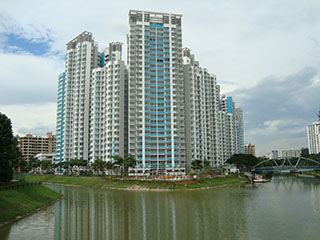
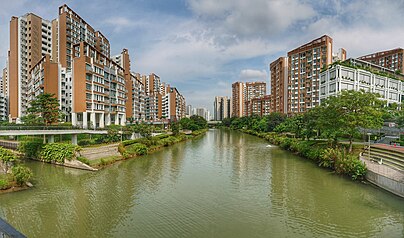








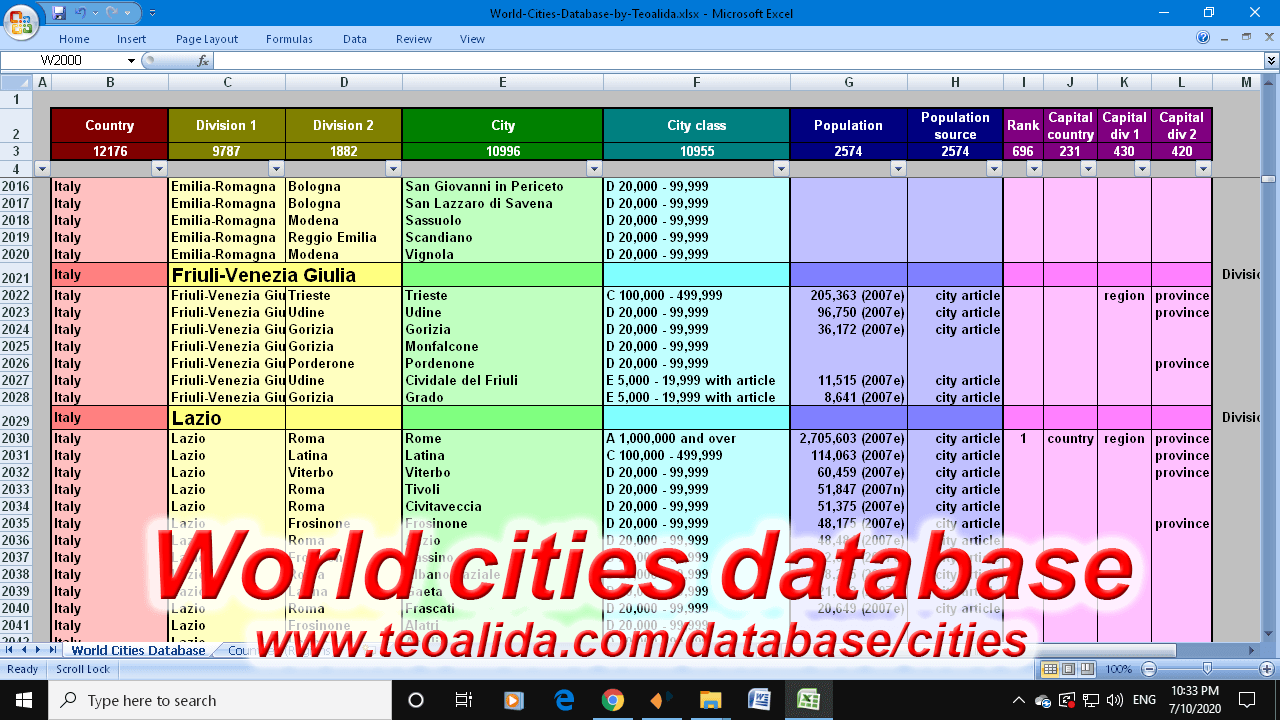
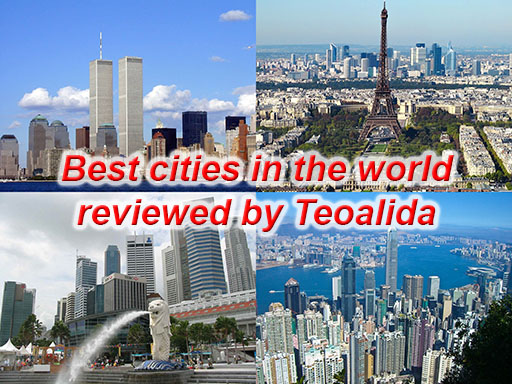
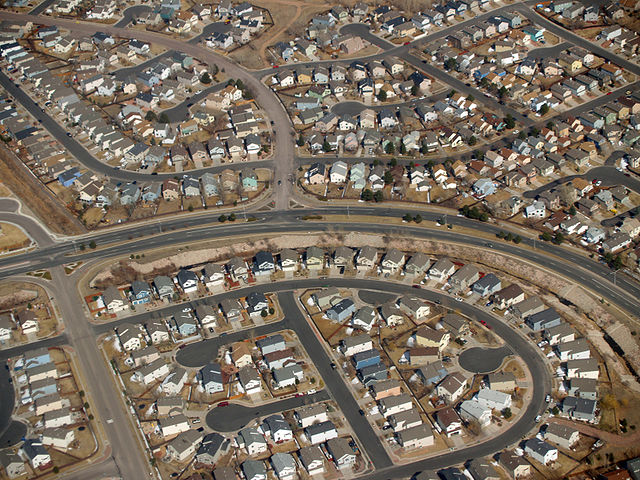
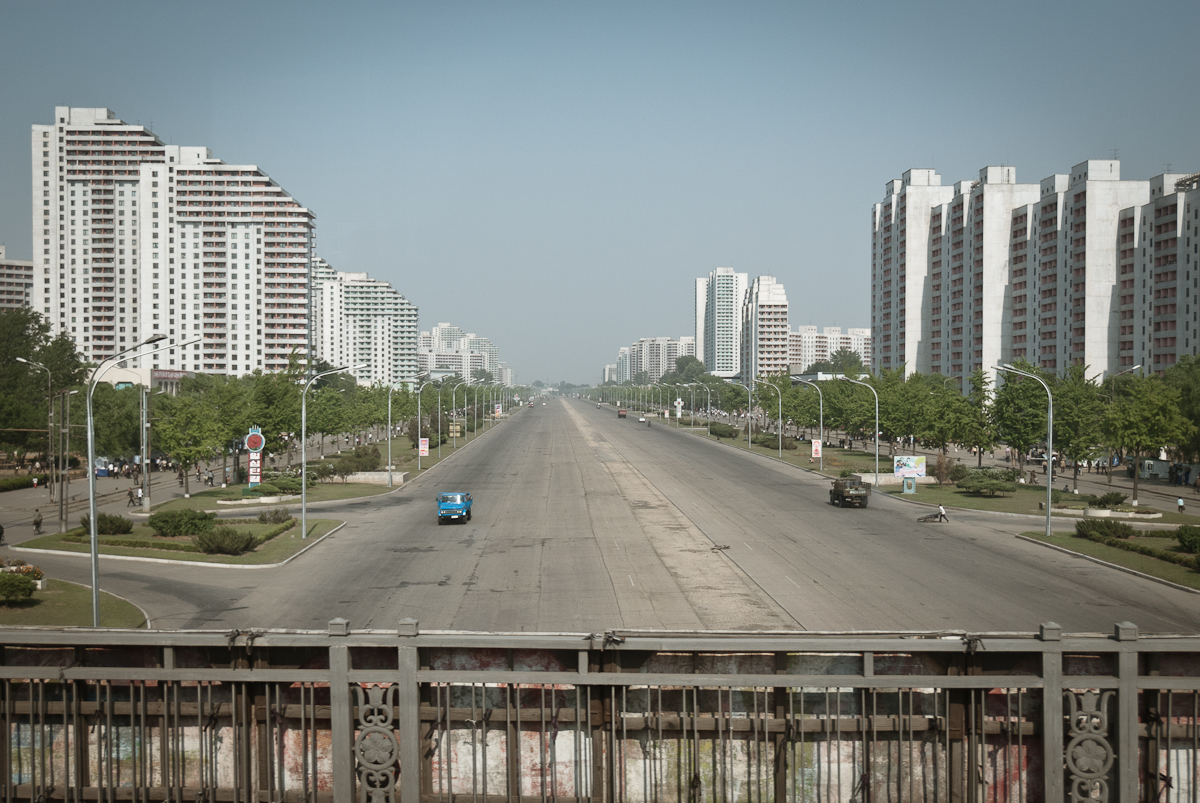
Inchirieri expresoare cafea boabe in sistem comodat(GRATUIT) pentru birouri si orice alta locatie in Bucuresti
Very insightful. Thank you for sharing your research and knowledge 🙂
And all that housing with little or no insulation or double glazing , and an excessive rate of rebuilding of relatively recent housing , this is not an ecological city in any way . Also apartments are getting smaller and smaller and more and more expensive.
Seeing the cost of everything , the failing infrastructure due to an excessive population , and the future costs of water and electricity
all produced from fossil fuels , not a place to stay .
Dear Sir / Madam,
Greetings from Papua New Guinea, Im interested for your firm to do me a full Architectural Plan / Mechanical / Electrical full design drawings.
Its a 3 storey Office building, the size of the entire area are as follows:
24meter length x 18meter wide
I look forward to hear from you.
Regards
Fred Tulia
Dear Sir,
Could you please kindly communicate with me
I need to communicate with yoiur team
Regards
Fred Tulia
Fred Tulia, you sent me an offline message via chat on 26 March and I replied you via email, I was hoping that you see my email thus not necessary to reply on website too. I am very busy now and did not noticed your 1 June comment, also because you replied just after a spammer. Only now I noticed your comment and checked email to see that you never opened the email I sent you on 26 March.
Roy is the best person who can help you but do note that we are both TIRED of time-wasters and I would like to know what happened with Pangia Lodge which you wanted to hire us 2018 and didn’t saw any payment from your side.
Is your email address still the same? I emailed you. Roy here
Wait that illegal.
What are you referring to? What is illegal?